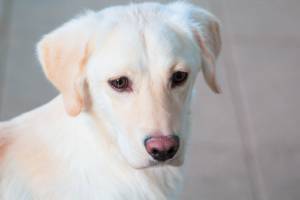
Understanding the Heat Cycle
A dog’s heat cycle, also known as estrus, refers to the period when a female dog is receptive to mating. This cycle is a natural part of a dog’s reproductive system and occurs approximately every six months, but this can vary widely among different breeds and individual dogs. Smaller breeds tend to have more frequent cycles, while larger breeds may have longer intervals between cycles.
Signs of Heat
During a dog’s heat cycle, there are several visible signs to look out for. The first stage is called proestrus, during which the female dog may experience swelling of the vulva and a bloody discharge. This stage typically lasts for around 9 days, but it can vary. The next stage is estrus, where the discharge becomes lighter in color, and the female is receptive to mating. This phase generally lasts for about 5-13 days. The final stage is diestrus, where the female is no longer receptive to mating, and the heat cycle concludes.
Factors Affecting Heat Cycles
Several factors can influence a dog’s heat cycle. For instance, environmental factors, such as the presence of other intact female dogs, can sometimes synchronize heat cycles among dogs living in close proximity. Additionally, a dog’s age and overall health can impact the regularity and intensity of heat cycles. It’s important to consult with a veterinarian to ensure that your dog’s health and reproductive system are in good condition.
Handling the Heat Cycle
During a dog’s heat cycle, it’s essential to provide extra care and attention. If you’re not planning to breed your dog, you may want to consider methods to prevent unwanted pregnancies, such as keeping your dog indoors or using doggie diapers. It’s crucial to supervise your dog closely during this time, as male dogs can be attracted from a distance by the scent of a female in heat.
Consulting Your Veterinarian
If you have any concerns about your dog’s heat cycle or reproductive health, it’s always best to seek advice from a veterinarian. They can provide specific guidance tailored to your dog’s individual needs and help you make informed decisions regarding spaying or breeding.
In conclusion, a dog’s heat cycle is a natural and important aspect of their reproductive health. By being aware of the frequency and signs of a dog’s heat cycle, you can create a safe and comfortable environment for your furry friend. Remember, every dog is unique, so it’s essential to observe and understand your dog’s individual needs throughout this natural process.
[/fusion_text]



